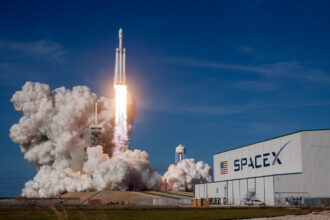Disease outbreaks are affecting flood victims in Southern Punjab. The NASA Moon rocket is ready for its second launch attempt.
On Saturday, NASA plans to launch its unmanned test capsule toward the Moon after technical issues halted its first launch attempt.
If It will be not only an awe-inspiring launch but also a historic moment for NASA because it marks the first time its Artemis program will return humans to the Moon after fifty years.
A two-hour delay possible if necessary for the launch, which scheduled for 2:17 pm local time (1817 GMT).
On Friday, Jeremy Parsons, deputy manager of exploration ground systems at Kennedy Space Center, said, “Our team is ready.”.
“They’ve improved with every launch and performed superbly during countdown number one… If the weather and hardware align, we’ll definitely go.”
Despite the closure of the site, hundreds of thousands of people expected to gather at nearby beaches to witness NASA’s most powerful vehicle ever launch.
Engineers had to halt NASA’s launch attempt on Monday due to a fuel leak and a too-hot engine sensor.
Both issues have since been resolved, and the weather is looking good. The US Space Force predicts 60% favorable weather at liftoff, with 80% by launch time.
There are backup options on Monday or Tuesday in case NASA needs to stand down again on Saturday. Due to the Moon’s position, the next launch window will not be until September 19.
Onboard the mission, mannequins with sensors will measure acceleration, vibration, and radiation levels.
Apollo’s twin mission of NASA
The spacecraft will fly at a distance of about 60 miles (100 kilometers) from the Moon. Which is farther than any human-rated craft has flown in a retrograde orbit.
At 16 feet in diameter, the capsule’s heat shield is the largest ever built and is expected to last around six weeks.
Heat shields returning to Earth’s atmosphere must be able to withstand speeds of 25,000 miles per hour and temperatures of 5,000 degrees Fahrenheit (2,760 degrees Celsius).
In honor of Apollo’s twin sister, Artemis, the first Moon missions named after him.
The Artemis missions will see the first person of color and woman step foot on the lunar surface, unlike the Apollo missions, which sent only white men.
The final approval for liftoff gave by NASA’s first woman launch director, Charlie Blackwell-Thompson.
After years of delays and cost overruns, the success of Artemis 1 would be a huge relief to the US space agency.
Each of its first four missions will cost a staggering $4.1 billion per launch, according to a government audit. NASA’s next mission, Artemis 2, won’t land on the Moon.
A lunar space station, as well as a sustainable presence on the Moon, built during Artemis 3’s mission in 2025.
By the end of the 2030s, NASA chief Bill Nelson expects to attempt a manned trip to Mars aboard Orion.













